Visit to download the full and correct content document: https://ebookmass.com/product/practitioners-guide-to-using-research-for-evidence-ba sed-practice-2e-2nd-edition-ebook-pdf-version/
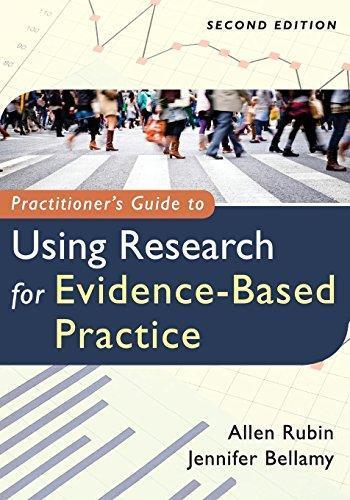
More products digital (pdf, epub, mobi) instant download maybe you interests ...
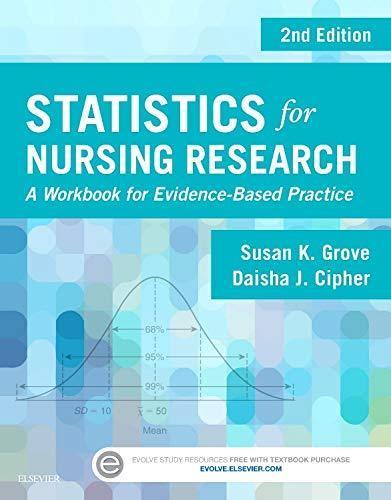
Statistics for Nursing Research: A Workbook EvidenceBased Practice 2nd Edition – Ebook PDF Version
https://ebookmass.com/product/statistics-for-nursing-research-aworkbook-evidence-based-practice-2nd-edition-ebook-pdf-version/
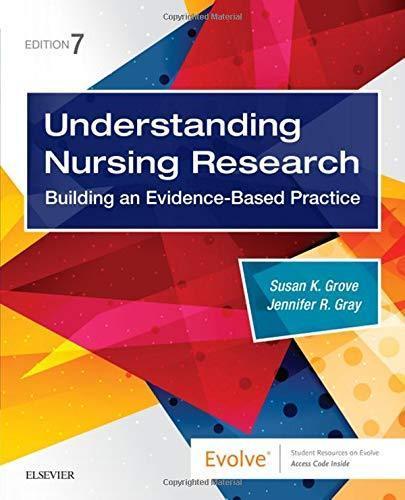
Understanding Nursing Research: Building an EvidenceBased Practice 7th Edition – Ebook PDF Version
https://ebookmass.com/product/understanding-nursing-researchbuilding-an-evidence-based-practice-7th-edition-ebook-pdfversion/
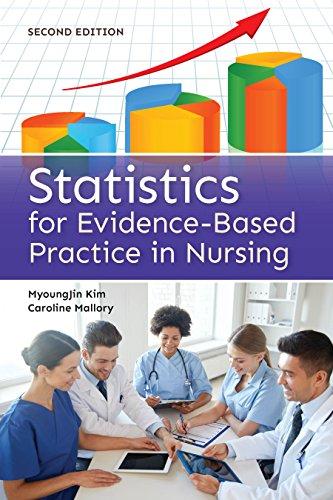
Statistics for Evidence-Based Practice in Nursing –Ebook PDF Version
https://ebookmass.com/product/statistics-for-evidence-basedpractice-in-nursing-ebook-pdf-version/
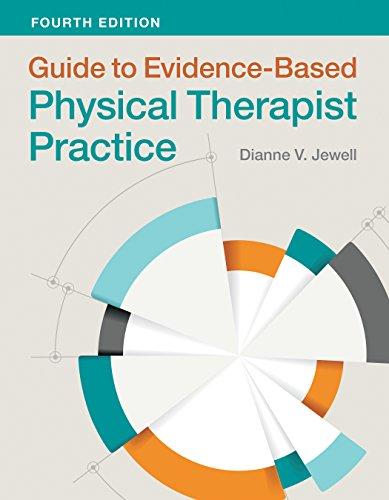
Guide to Evidence Based Physical Therapist Practice 4th Edition, (Ebook PDF)
https://ebookmass.com/product/guide-to-evidence-based-physicaltherapist-practice-4th-edition-ebook-pdf/
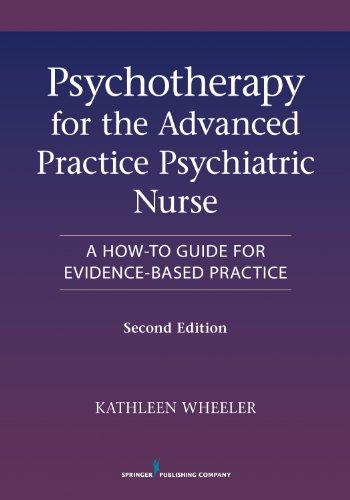
Psychotherapy for the Advanced Practice Psychiatric Nurse, Second Edition: A How To Guide for Evidence Based Practice 2nd Edition, (Ebook PDF)
https://ebookmass.com/product/psychotherapy-for-the-advancedpractice-psychiatric-nurse-second-edition-a-how-to-guide-forevidence-based-practice-2nd-edition-ebook-pdf/
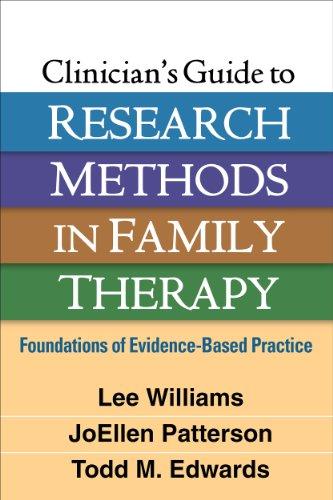
Clinician’s Guide to Research Methods in Family Therapy: Foundations of Evidence Based Practice 1st Edition, (Ebook PDF)
https://ebookmass.com/product/clinicians-guide-to-researchmethods-in-family-therapy-foundations-of-evidence-basedpractice-1st-edition-ebook-pdf/
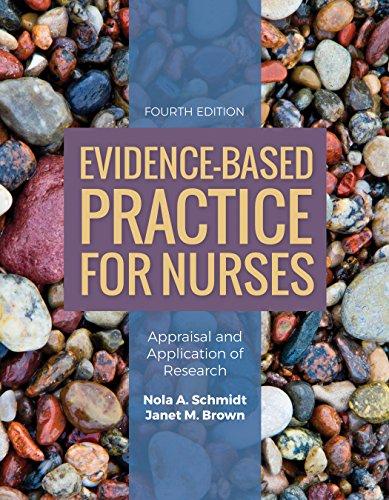
Evidence Based Practice for Nurses: Appraisal and Application of Research 4th Edition, (Ebook PDF)
https://ebookmass.com/product/evidence-based-practice-for-nursesappraisal-and-application-of-research-4th-edition-ebook-pdf/
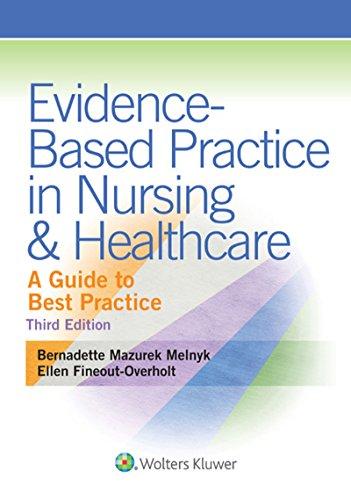
Evidence Based Practice in Nursing & Healthcare: A Guide to Best Practice 3rd Edition, (Ebook PDF)
https://ebookmass.com/product/evidence-based-practice-in-nursinghealthcare-a-guide-to-best-practice-3rd-edition-ebook-pdf/
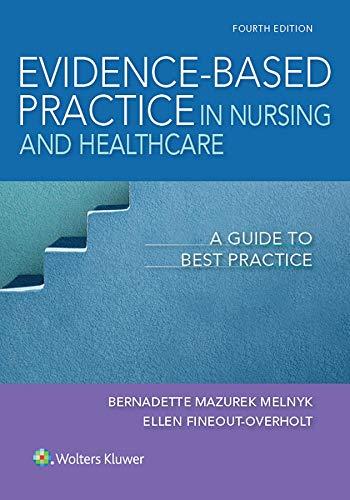
Evidence Based Practice in Nursing & Healthcare: A Guide to Best Practice 4th Edition, (Ebook PDF)
https://ebookmass.com/product/evidence-based-practice-in-nursinghealthcare-a-guide-to-best-practice-4th-edition-ebook-pdf/
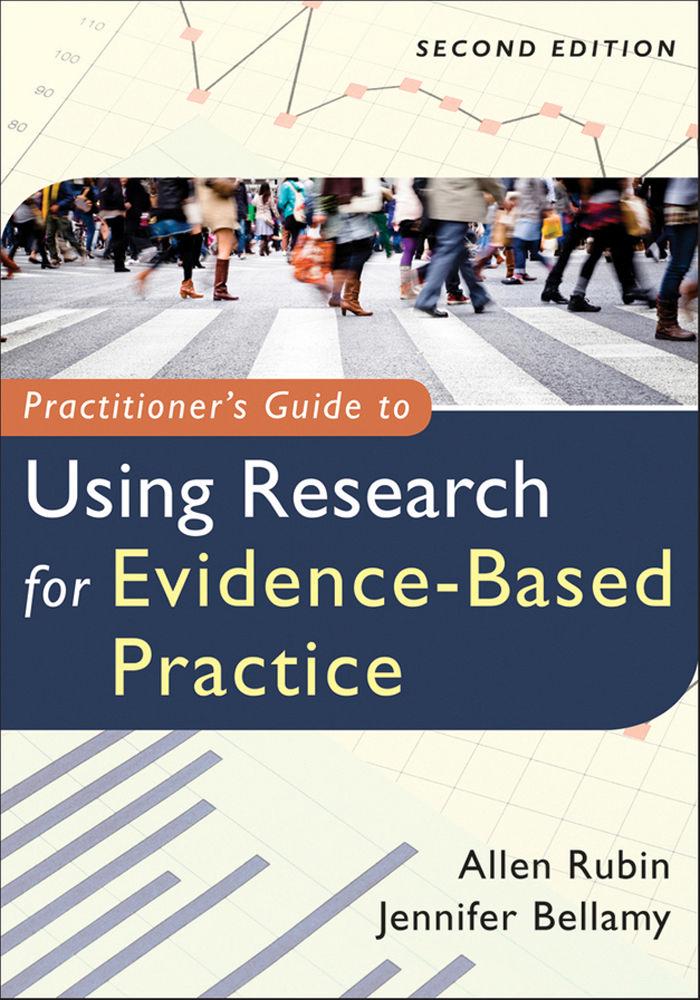
PART I: Overview of Evidence-Based Practice
Chapter 1 Introduction to Evidence-Based Practice 3
Emergence of Evidence-Based Practice 5
Defining Evidence-Based Practice 6
Types of EBP Questions 7
Evidence-Based Practice Is Not Restricted to Clinical Decisions 17
Developing an Evidence-Based Practice Process Outlook 17
Easier Said Than Done 23
Key Chapter Concepts 25
Review Exercises 26
Additional Readings 27
Chapter 2 Steps in the EBP Process 28
Step 1: Question Formulation 29
Step 2: Evidence Search 30
Step 3: Critically Appraising Studies and Reviews 38
Step 4: Selecting and Implementing the Intervention 40
Step 5: Monitor Client Progress 43
Feasibility Constraints 44
Key Chapter Concepts 47
Review Exercises 48
Additional Readings 49
Chapter 3 Research Hierarchies: Which Types of Research Are Best for Which Questions? 50
More Than One Type of Hierarchy for More Than One Type of EBP Question 51
Qualitative and Quantitative Studies 53
What Types of Research Designs Apply to What Types of EBP Questions? 54
Key Chapter Concepts 65
Review Exercises 67
Additional Readings 67
PART II: Critically Appraising Studies for EBP Questions About Intervention Effectiveness
Chapter 4 Criteria for Inferring Effectiveness: How Do We Know What Works? 71
Internal Validity 72
Measurement Issues 78
Statistical Chance 83
External Validity 88
Synopses of Research Studies 90
Key Chapter Concepts 95
Review Exercises 96
Exercise for Critically Appraising Published Articles 97
Additional Readings 98
Chapter 5 Critically Appraising Experiments 99
Classic Pretest–Posttest Control Group Design 100
Posttest-Only Control Group Design 102
Solomon Four-Group Design 103
Alternative Treatment Designs 104
Dismantling Designs 106
Placebo Control Group Designs 107
Experimental Demand and Experimenter Expectancies 109
Obtrusive Versus Unobtrusive Observation 110
Compensatory Equalization and Compensatory Rivalry 111
Resentful Demoralization 111
Treatment Diffusion 112
Treatment Fidelity 113
Practitioner Equivalence 113
Differential Attrition 115
Synopses of Research Studies 117
Key Chapter Concepts 123
Review Exercises 124
Exercise for Critically Appraising Published Articles 125 Additional Readings 125
Chapter 6 Critically Appraising Quasi-Experiments:
Nonequivalent Comparison Groups Designs 126
Nonequivalent Comparison Groups Designs 127
Additional Logical Arrangements to Control for Potential Selectivity Biases 130
Statistical Controls for Potential Selectivity Biases 134
Propensity Score Matching Using a Policy Example 144
Pilot Studies 145
Synopses of Research Studies 147
Key Chapter Concepts 152
Review Exercises 153
Exercise for Critically Appraising Published Articles 153
Additional Readings 154
Chapter 7 Critically Appraising Quasi-Experiments: Time-Series Designs and Single-Case Designs 155
Simple Time-Series Designs 156
Multiple Time-Series Designs 159
Single-Case Designs 161
Synopses of Research Studies 168
Key Chapter Concepts 174
Review Exercises 175
Exercise for Critically Appraising Published Articles 176
Additional Reading 176
Chapter 8 Critically Appraising Systematic Reviews and Meta-Analyses 177
Advantages of Systematic Reviews and Meta-Analyses 179
Risks in Relying Exclusively on Systematic Reviews and Meta-Analyses 180
Where to Start 181
x Contents
What to Look for When Critically Appraising
Systematic Reviews 182
What Distinguishes a Systematic Review From Other Types of Reviews? 190
What to Look for When Critically Appraising
Meta-Analyses 191
Synopses of Research Studies 205
Key Chapter Concepts 209
Review Exercises 211
Exercise for Critically Appraising Published Articles 212
Additional Readings 212
PART III: Critically Appraising Studies for Alternative EBP Questions
Chapter 9 Critically Appraising Nonexperimental Quantitative Studies 215
Surveys 216
Cross-Sectional and Longitudinal Studies 228
Case-Control Studies 229
Synopses of Research Studies 231
Key Chapter Concepts 240
Review Exercises 242
Exercise for Critically Appraising Published Articles 242
Additional Readings 242
Chapter 10 Critically Appraising Qualitative Studies 243
Qualitative Observation 245
Qualitative Interviewing 247
Qualitative Sampling 250
Grounded Theory 252
Frameworks for Appraising Qualitative Studies 252
Mixed Model and Mixed Methods Studies 257
Synopses of Research Studies 258
Key Chapter Concepts 266
Review Exercises 271
Exercise for Critically Appraising Published Articles 272
Additional Readings 272
PART IV: Assessing Clients and Monitoring Their Progress
Chapter 11 Critically Appraising and Selecting Assessment Instruments 275
Reliability 276
Validity 280
Sensitivity 285
Feasibility 287
Sample Characteristics 288
Locating Assessment Instruments 289
Synopses of Research Studies 291
Key Chapter Concepts 296
Review Exercises 297
Exercise for Critically Appraising Published Articles 298
Additional Readings 298
Chapter 12 Monitoring Client Progress 299
A Practitioner-Friendly Design 301
Feasible Assessment Techniques 304
Summary 313
Looking Ahead 316
Key Chapter Concepts 318
Review Exercises 319
Additional Readings 319
Appendix A Illustrative Answers to Selected Review Exercises 321
Chapter 3 Review Exercises 321
Chapter 4 Review Exercises 322
Chapter 5 Review Exercises 323
Chapter 7 Review Exercises 324
Chapter 8 Review Exercises 324
Chapter 12 Review Exercises 325
Appendix B What You Do and Don’t Need to Know About Statistics When Critically Appraising Studies 327
Why Do We Need Inferential Statistics? The Bottom Line 328
The Benchmark Made Simple 329
Is That Really All You Need to Know? 330
The Benchmark Is Not Sacred! 331
What Else Do You Need to Know? 332
Conclusion 333
Preface
Helping professionals these days are hearing a great deal about evidence-based practice (EBP) and are experiencing increasing pressure to engage in it. In fact, EBP has become part of the definition of ethical practice.
Accompanying the growth in the popularity of EBP in the human services field is a growing concern about how rarely practitioners engage in the EBP process. Various pragmatic factors have been cited regarding this concern, such as time constraints and lack of agency access to bibliographic databases. Another factor is that practitioners typically do not retain the research knowledge that they learned as students. Many practitioners, therefore, are likely to feel unable to implement the EBP process because they feel incapable of identifying and appraising accurately the quality of research studies. There are various reasons why practitioners may not retain the research knowledge that they learned as students. One is simply the passage of time. Exacerbating that factor is that in their early careers they are unlikely to experience expectations from superiors that they use the research knowledge they gained in school. Another factor is the way that research courses may have been taught. Typically, the emphasis in teaching research has been more on how to do research in the role of researcher than on appraising and using research in the role of a practitioner who is engaged in EBP. Little wonder, then, that so many students who aspire to be service providers—and not researchers—lack enthusiasm for their research courses and soon forget much of what they learned in them.
Consequently, when service providers attempt to heed the call to engage in EBP by finding and appraising research studies, practitioners are likely to experience difficulty in differentiating between those studies that contain reasonable limitations and those that contain fatal flaws. That is, they are likely to feel unable to judge whether a study’s limitations merely imply regarding the study with some caution or disregarding it as too egregiously flawed to be worthy of guiding their practice. Lacking confidence in this judgment, it’s easy for practitioners to feel discouraged about engaging in EBP. This book attempts to alleviate that problem. Rather than discussing research from the standpoint of preparing to do research, it provides a practitioner-oriented guide to appraising and using research as part of the EBP process. Current and future
practitioners can use this book as a user-friendly reference to help them engage in all the steps of the EBP process, including that step in which they must differentiate between acceptable methodological research limitations and fatal flaws, and accurately judge the degree of caution warranted in considering whether a study’s findings merit guiding practice decisions.
By maintaining a constant focus on explaining in a practitioner-friendly and accessible manner how to appraise and use research in the context of the EBP process, this book can help readers feel that they are learning about research concepts relevant to their practice—research concepts that can help them improve their implementation of EBP. In turn, the book attempts to empower and motivate readers to engage in that process.
Although most of the book’s contents focus on critically appraising research to answer EBP questions, its final chapter simplifies the process of practitioner use of research methods to evaluate their own practice. That’s because the final step in the EBP process requires that practitioners employ research techniques to monitor client progress and evaluate whether their client achieved the desired outcome. However, unlike other texts that emphasize rigor in pursuit of causal inferences in single-case designs, the final chapter of this book is based on the premise that the practitioner is just assessing whether clients appear to be benefiting from an intervention whose likely effectiveness has already been supported in the studies examined by the practitioner in the EBP process of searching for and appraising existing evidence. Thus, the emphasis in the final chapter is on feasibility. In light of the much-researched problem of practitioners eschewing the application of single-case designs in their practice, this book’s unique emphasis is intended to increase the extent to which practitioners will use single-case design methods to monitor client progress.
In summary, this book aims to provide human services practitioners what they need to know about various research designs and methods so that when engaging in the EBP process they can:
• Determine which interventions, programs, policies, and assessment tools are supported by the best evidence.
• Find and critically appraise qualitative and quantitative research studies in seeking evidence to answer different kinds of EBP questions.
• Differentiate between acceptable limitations and fatal flaws in judging whether studies at various positions on alternative research hierarchies (depending on the EBP question being asked) merit being used with caution in guiding their practice.
• Assess treatment progress with chosen interventions in a feasible manner as part of the final stage of EBP.
ORGANIZATION
The first part of this book contains three chapters that provide a backdrop for the rest of the book. Chapter 1 shows why it’s important for readers to learn about research methods from the standpoint of becoming evidence-based practitioners, briefly reviews the history of EBP, defines EBP, provides an overview of the types of EBP questions, discusses the need to develop an EBP outlook and describes what that outlook means, discusses feasibility constraints practitioners face in trying to engage in the EBP process, and offers suggestions for making the various steps in the process more feasible for them.
Chapter 2 describes the steps of the EBP process in more detail—including how to formulate an EBP question and how to search for evidence bearing on that question and to do so feasibly. Overviews are provided of subsequent steps—steps that are discussed in more depth in later chapters. As in other chapters, Chapter 2 ends with a focus on feasibility issues.
One of the most controversial and misunderstood aspects of EBP concerns hierarchies for evaluating sources of evidence. Some think that there is only one hierarchy for appraising research and guiding practice. Some believe that unless a study meets all the criteria of the gold standard of randomized clinical trials (RCTs), then it is not worthy of guiding practice. Others are offended by the notion of an EBP research hierarchy and believe it devalues qualitative inquiry and nonexperimental research, such as multivariate correlational studies using cross-sectional, case control, or longitudinal designs.
Chapter 3 attempts to alleviate this controversy and misunderstanding by discussing the need to conceptualize multiple research hierarchies for different types of EBP questions. It explains how and why certain kinds of designs belong at or near the top of one hierarchy yet at or near the bottom of another hierarchy. Thus, the chapter provides examples of EBP research questions for which qualitative studies deserve to be at the top of a research hierarchy and others where qualitative studies deserve to be near the bottom and likewise why RCTs belong near the top or bottom of hierarchies depending on the EBP question being asked.
Part II delves into what practitioners need to know so that they can critically appraise studies pertinent to EBP questions about the effectiveness of interventions, programs, or policies. Chapter 4 sets the stage for the remaining four chapters in this section by discussing criteria for inferring effectiveness, including such concepts as internal and external validity, measurement issues, and statistical chance.
Chapter 5 describes the nature and logic of experiments and how to critically appraise them. It does not address how to conduct experiments. Instead, it emphasizes what features to look for in appraising an experiment that might represent minor or
Preface
fatal flaws despite random assignment. Those features include measurement biases and attrition biases that can lead to erroneous conclusions that an intervention is effective as well as things like diffusion and resentful demoralization that can lead to erroneous conclusions that an intervention is ineffective.
Chapters 6 and 7 describe the nature and logic of quasi-experiments and how to critically appraise them. Again, these chapters do not delve into how to implement them. Instead, they emphasize what features to look for in appraising a quasi-experiment that might represent minor or fatal flaws or that might be important strengths to help offset the lack of random assignment.
Chapter 6 focuses on critically appraising nonequivalent comparison group designs. It distinguishes between those designs and preexperimental pilot studies and discusses how the two sometimes are mistakenly equated. It discusses the potential value of pilot studies to practitioners when more conclusive sources of evidence that apply to their EBP question are not available. It also alerts practitioners to the ways in which authors of preexperimental studies can mislead readers by discussing their findings as if they offer stronger grounds than is warranted for calling the intervention, program, or policy they studied evidence-based. Practitioner-friendly statistical concepts are discussed at a conceptual level, providing readers what they’ll need to know to understand the practical implications of—and not get overwhelmed by—multivariate procedures used to control for possible selectivity biases. Chapter 7 extends the discussion of quasiexperiments by focusing on the critical appraisal of time-series designs and single-case designs.
Chapter 8 discusses how to critically appraise systematic reviews and meta-analyses. It includes content on the advantages of both as well as risks in relying exclusively on them. It also addresses how to find them, key things to look for when critically appraising them, and what distinguishes them from other types of reviews. The metaanalytical statistical concept of effect size is discussed in a practitioner-friendly manner.
Part III turns to the critical appraisal of studies for EBP questions that do not emphasize causality and internal validity. Chapter 9 discusses critically appraising nonexperimental quantitative studies, such as surveys, longitudinal studies, and casecontrol studies. Chapter 10 then discusses critically appraising qualitative studies. Qualitative studies play an important role in EBP when practitioners seek answers to EBP questions aimed at gaining a deeper understanding of the experiences of others, such as clients, their family members, communities, and service providers. Thus, Chapter 10 includes content on what to look for when critically appraising qualitative observation, qualitative interviewing, qualitative sampling, and grounded theory. Different frameworks for appraising qualitative studies are discussed from the standpoints of empowerment standards, social constructivist standards, and contemporary positivist standards.
The final section of this book, Part IV, contains two chapters that address EBP questions pertaining to assessing clients and monitoring their progress. Chapter 11 discusses how to critically appraise and select assessment instruments. It covers in greater depth and in a practitioner-friendly manner the following concepts that also are addressed (in less depth) in earlier chapters: reliability, validity, sensitivity, and cultural sensitivity. It also shows how to locate assessment instruments and—as with other chapters—emphasizes practitioner and client feasibility.
Chapter 12 turns to feasible ways practitioners can implement aspects of single-case design techniques to monitor client progress as part of the final stage of the EBP process. This chapter is distinguished from the way other sources cover this topic by its emphasis on feasibility. Chapter 12 is based on the premise that when practitioners are providing interventions that already have the best evidence, they don’t need to pursue elaborate designs that are likely to intimidate them and be unfeasible for them in light of their everyday practice realities. Instead of feeling that they must implement designs that have a high degree of internal validity in isolating the intervention as the cause of the client’s improved outcome, they can just monitor progress to check on whether their particular client is achieving a successful outcome or is perhaps among those people who don’t benefit from the intervention. This chapter is distinguished from Chapter 7 in that Chapter 7 focuses on appraising published single-case design studies from the standpoint of finding interventions supported by the best evidence. In keeping with its feasibility emphasis, Chapter 12 proposes the B-plus (B+) design. It also illustrates some feasible ways in which practitioners can devise their own measures to monitor client progress.
SPECIAL FEATURES
Chapters 4 through 11 end by presenting two synopses of (mainly fictitious) research studies germane to each chapter’s purpose. Readers can critically appraise each of these 16 synopses—writing down strengths, reasonable flaws, and fatal flaws and indicating whether and how each could be used to guide decisions about evidence-based practice. A critical appraisal of each of these synopses immediately follows their description, providing an overview against which readers can check their own critiques.
Review exercises are included in each chapter, and Appendix A at the end of the book provides illustrative answers to selected review exercises to give readers further guidance for self-study. Additional exercises for critically appraising published articles are also included at the end of Chapters 5 through 10.
Appendix B is an extended discussion of inferential statistics. This appendix includes a list of commonly used statistical tests and their appropriate use for readers seeking more guidance on reading and interpreting statistics.
In addition, each chapter also includes a list of key chapter concepts and some additional readings pertinent to the chapter contents, including sources for those readers who are interested in materials with more information about corresponding research methodology. Terms that appear in bold in the text are defined in a glossary at the end of the book.
NEW TO THIS EDITION
Despite the success of the first edition of this book, a number of improvements have been made in this edition to keep up with developments in this rapidly evolving field and in response to the excellent suggestions made by reviewers of the previous edition. In fact, one of those reviewers, Jennifer Bellamy, provided such a comprehensive, detailed, and valuable list of suggested improvements that I invited her to serve as a co-author for this edition, with the expectation that she would take the primary responsibility for implementing her suggested improvements. I was delighted when she accepted my invitation, and am even more delighted with how well she has implemented those improvements. The most significant improvements made in this edition include:
• Reorganized opening chapters regarding common types of EBP questions.
• Additional types of EBP questions are covered, such as regarding costs and potential harmful effects of programs, policies, or interventions.
• Increased attention to macro-level EBP questions and studies.
• Coverage of the dodo bird verdict and the common relationship factors argument.
• New materials on defining EBP, including the addition of a transdisciplinary model of EBP.
• More detailed guidance on EBP question formulation and conducting Internet searches, including the PICO (patient problem or population, intervention, comparison, and outcome) framework.
• Updated references and practice exercises.
• Revised content on research hierarchies and matrices.
• New content on multivariate designs, including propensity score matching.
• Extended discussion of effect sizes, including attention to odds ratios, risk ratios, and number needed to treat estimates.
• Expanded coverage of systematic reviews and meta-analyses, including a section on the PRISMA (Preferred Reporting Items for Systematic Reviews and MetaAnalyses) statement.
• A section on mixed model and mixed methods studies has been added to the chapter on qualitative studies.
Preface xix
• Exercises on critically appraising published articles at the end of six chapters (in addition to the other types of exercises that were in the first edition).
• Critical appraisals of the chapter-by-chapter study synopses have been moved up so that rather than appearing in appendices they now immediately follow the synopses at the end of each chapter.
• A new appendix providing illustrative answers to selected review exercises.
• Another new appendix, titled “What You Do and Don’t Need to Know About Statistics When Critically Appraising Studies.” This appendix is written in a user-friendly (and at times humorous) manner for trainees who might feel so intimidated by the statistical content of research studies that they become immobilized and feel that they are unable to critically appraise or utilize the research. The ultimate aim of the appendix is to bolster their confidence in their ability to critically appraise research studies and to encourage them not to become immobilized when they encounter advanced statistical concepts that they do not understand.
Although this edition has Jennifer as a coauthor, I have kept the writing in the firstperson singular to maintain the user-friendly style of the first edition. I hope you find this book useful. Any suggestions you have for improving it will be appreciated and can be sent to me at arubin@austin.utexas.edu.
ALLEN RUBIN
Acknowledgments
Special thanks go to the following colleagues who reviewed the first edition of this book and provided helpful suggestions for this second edition: Philip J. Osteen, PhD, University of Maryland; Jay Unick, PhD, University of Maryland; Alan J. Lipps, PhD, Abilene Christian University; Lettie L. Lockhart, PhD, University of Georgia; Joanne Yaffe, PhD, University of Utah; Ray Sanchez Mayers, PhD, Rutgers; Trenette Clark, PhD, University of North Carolina at Chapel Hill; and Naomi Chedd, Licensed Mental Health Counselor and Educational Consultant, Brookline, MA. Thanks! Thanks also go to the following people at Wiley: Lisa Gebo (senior editor), Peggy Alexander (vice president, publisher), and Sweta Gupta (assistant editor) for their work on the first edition of this book, as well as Rachel Livsey (senior editor) and Amanda Orenstein (editorial assistant) for their work on the second edition.
